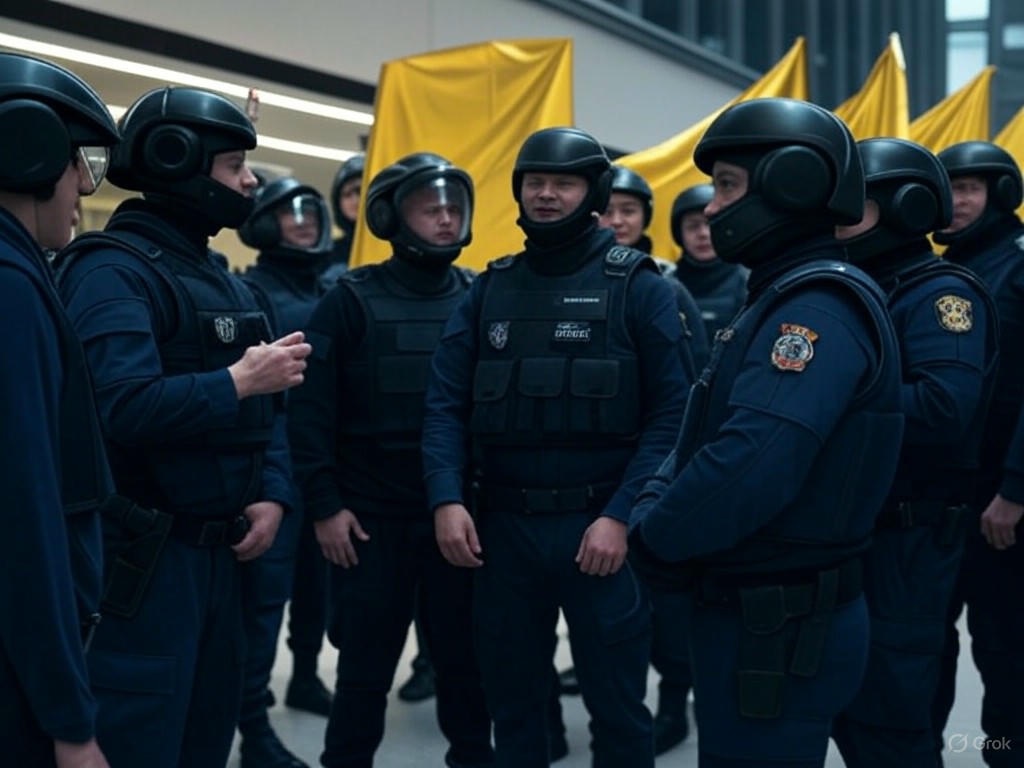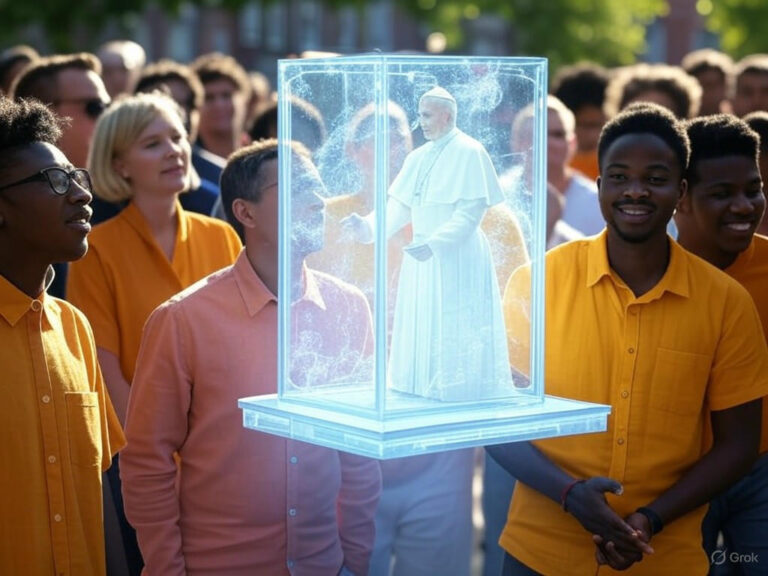
Columbia University Protest: Safety Officers Clash with Pro-Palestinian Demonstrators at Library
Overview of the Columbia University Protest
In the heart of New York City, the Columbia University protest erupted on May 7, 2025, drawing national attention as pro-Palestinian demonstrators took over parts of Butler Library. This event underscores a growing tension on campuses nationwide, where students are pushing for change amid the Gaza conflict. It’s a stark reminder that Columbia University protest isn’t just about one day—it’s part of a larger movement challenging how institutions balance activism and order.
Imagine walking into a historic library, a place meant for quiet study, only to find it transformed into a flashpoint of voices demanding divestment from Israel. That’s exactly what happened, with public safety officers stepping in to manage the chaos. Have you ever wondered how a peaceful gathering can escalate so quickly? This incident highlights the complexities of student-led actions in such a charged environment.
How the Protest Unfolded at Butler Library
The afternoon started with students entering Butler Library, quickly turning a study space into a stage for dissent. Protesters occupied a main room, chanting slogans and, according to reports, causing damage to university property. As tensions rose, Columbia’s public safety officers moved in, asking for identification and issuing warnings that led to arrests and injuries.
At least three individuals were detained, and one was carried out on a stretcher, with emergency teams rushing to the scene. This moment in the Columbia University protest raises questions about preparation and response—could better dialogue have prevented the escalation? Footage from the event, shared widely online, shows the raw emotion and urgency driving these demonstrations.
Key Events Captured in the Columbia University Protest
- Protesters swiftly occupied and vandalized areas inside Butler Library, turning academic halls into protest zones.
- Officers worked to clear the space, facing resistance that resulted in physical confrontations.
- Reports confirmed at least two injuries, prompting immediate medical intervention and adding to the day’s intensity.
- Outside groups tried to force their way in, heightening the overall unrest.
- The university prioritized safety by evacuating uninvolved students, a move that echoed broader concerns about campus security.
These details paint a vivid picture of how quickly events can spiral. If you’re a student activist yourself, you might ask: How can we advocate without crossing lines that endanger everyone involved?
Background on Pro-Palestinian Activism at Columbia University
This isn’t the first wave of activism; it’s built on months of sustained efforts starting from April 2024. Groups like Columbia University Apartheid Divest (CUAD), Students for Justice in Palestine (SJP), and Jewish Voice for Peace (JVP) have been at the forefront, urging the university to address its ties to the Gaza conflict. The Columbia University protest of May 2025 is just the latest chapter in this ongoing narrative.
Think about it: What begins as a small encampment can grow into a movement that reshapes campus culture. These coalitions represent over 120 student organizations, all united in their call for financial divestment and accountability.
Notable Highlights of the Sustained Columbia University Protests
- The initial setup in April 2024 featured about 50 tents on the East Butler Lawn, symbolizing a growing demand for change.
- More than 120 groups have joined, amplifying voices across diverse backgrounds.
- Divestment from Israel remains a core demand, fueling rallies and discussions.
- Counterprotests have led to frequent clashes, involving both campus security and external law enforcement.
- Since the movement started, over 230 arrests have occurred, highlighting the high stakes involved.
This evolution shows how student activism can evolve, but it also prompts reflection: Is there a way to channel this energy into constructive dialogue rather than confrontation?
Columbia University’s Response and Evolving Policies
University leaders were quick to condemn the disruptions, especially during the critical pre-exam period. In their statement, officials emphasized that such actions violate campus rules and could lead to serious consequences for participants. This response is part of a broader strategy to maintain order while navigating political pressures.
Under recent changes influenced by federal scrutiny, Columbia introduced a mask ban and other security measures. Critics argue these steps might stifle expression, but supporters see them as necessary for safety. In the context of the Columbia University protest, these policies are testing the balance between protection and freedom.
For instance, if you’re planning a peaceful rally, knowing the rules ahead of time can make all the difference—always check university guidelines to avoid unintended fallout.
Injuries and Role of Law Enforcement in the Protest
As the situation intensified, the New York Police Department stood by, allowing campus officers to take the lead unless things got out of hand. Still, the refusal of some protesters to comply resulted in detentions and reported injuries, underscoring the physical risks involved. This aspect of the Columbia University protest brings home the human cost of activism.
Emergency responders were on site promptly, but the incident serves as a cautionary tale. How can we ensure that expressions of dissent don’t turn into harm? It’s a question worth pondering for anyone passionate about social issues.
Student and Community Reactions to the Protest
Opinions on campus are divided: Some students rally behind the protesters, viewing their actions as vital for raising awareness about Gaza. Others, buried in exam prep, feel frustrated by the interruptions to their routines. The Columbia University protest has sparked conversations about what’s truly at stake.
With federal threats to withhold funding, the university finds itself in the spotlight. Earlier arrests of key activists by immigration authorities have only fueled the debate, making this more than just a local issue.
If you’ve experienced similar tensions at your own school, you’re not alone—what strategies have worked for you in advocating change safely?
Comparing Columbia University Protests to Those Elsewhere
When you look at other U.S. campuses, the Columbia University protest stands out for its intensity and longevity. While schools like Harvard or UCLA have seen similar actions, Columbia’s events often involve more sustained encampments and direct administrative pushback.
| Columbia University | Other U.S. Universities |
|---|---|
| Features ongoing encampments, high-profile clashes, and federal involvement | Often shorter protests with varied administrative responses |
| Frequent interventions by public safety and police | Less consistent law enforcement presence |
| Faces funding threats from the Trump administration | Encounters general scrutiny but fewer direct impacts |
| Enforces strict policies like mask bans | Implements changes sporadically |
This comparison can help activists learn from different approaches—perhaps adapting tactics from less volatile campuses could offer new ideas.
Wider Context: Balancing Freedom of Expression and Campus Safety
The Columbia University protest reignites timeless debates about free speech versus security on college grounds. Universities strive to foster open dialogue, yet they must protect the community from harm, especially during key academic times like exam season.
For example, how do you draw the line between a peaceful sit-in and a disruptive occupation? It’s a dilemma that affects students everywhere, prompting schools to refine their policies.
Looking Ahead: The Ongoing Impact of Columbia University Protests
As the year wraps up, the ripples from this protest could reshape campus rules and national discussions on activism. Columbia’s situation might inspire other universities to rethink their strategies, blending security with the right to speak out.
Stay informed by following trusted sources, and consider joining campus forums to voice your views constructively. What changes do you hope to see from events like this?
Conclusion
In wrapping up, the Butler Library clash exemplifies the passionate drive of student activists amid complex global issues. It’s a call for all of us to engage thoughtfully, ensuring that protests lead to positive change without compromising safety.
I’d love to hear your thoughts—have you witnessed similar events, or do you have ideas on how to handle them better? Share in the comments, explore more on our site, or spread the word to keep the conversation going.
References
- CBS News. “Columbia University library pro-Palestinian demonstration.” Link
- YouTube Video. “Event footage.” Link
- Wikipedia. “Columbia University pro-Palestinian campus protests and occupations during the Gaza war.” Link
- University Registrar. “Official documents.” Link
- Columbia Law Review. “Related publications.” Link
- Diva Portal. “Research paper.” Link
- Purchase College. “Academic catalog.” Link
- Warner Pacific University. “Catalog details.” Link







